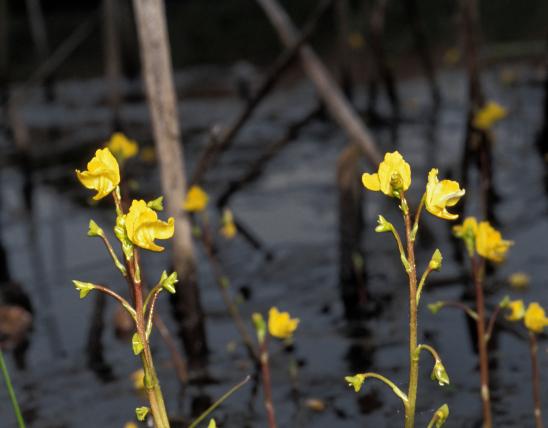
Perennial, usually hairy herb with wiry stems branching from the base, sometimes trailing, low, forming loose mats. Flowers orange to yellow, in the typical pea-flower configuration, with a large standard (banner, or top) petal, the other petals much smaller; in small groups subtended by bracts. Blooms May–September. Leaves alternate, trifoliate (3-parted), with partly joined stipules fused to the petioles and forming a hairy sheath around the stem as much as 2¾ inches long, with the free portions slender, to ¼ inch long. Fruits are one-seeded pods about ¼ inch long, with a curved or curled beak; the lower of the two chambers is usually infertile and appears like a stalk.
This is the only species of Stylosanthes in Missouri. It is small and often overlooked. Tell it from our other members of the bean family by its wiry stems, long, bristly hairs, orangish-yellow flowers, and distinctive fruits.
Height: usually not over 8 inches.

Scattered nearly statewide, but apparently absent from the northwestern third of the state.
Habitat and Conservation
Occurs on glades, upland prairies, sand prairies, savannas, dry upland forests, tops of bluffs, banks of streams and rivers, and rarely margins of ponds; also strip mines, old fields, and roadsides. There are between 25 and 50 species of Stylosanthes in the world. In tropical regions, some are planted for fodder and for soil stabilization.
Human Connections
The genus name means style-, pencil-, or column-flower. It could refer to the style, which persists after the petals fall off, or to the stalklike calyx tube of some species that raises the corolla above the bracts. But you can think of the flowers as being the same color that pencils are painted.
Ecosystem Connections
Bees visit the flowers, and a variety of mammals eat the leaves. This legume prospers in sunny, often dry, and rather acidic soils, which is one reason you can find it at old strip mine sites. It and other plants that grow in such places help to bind soil that might otherwise be eroded.




































